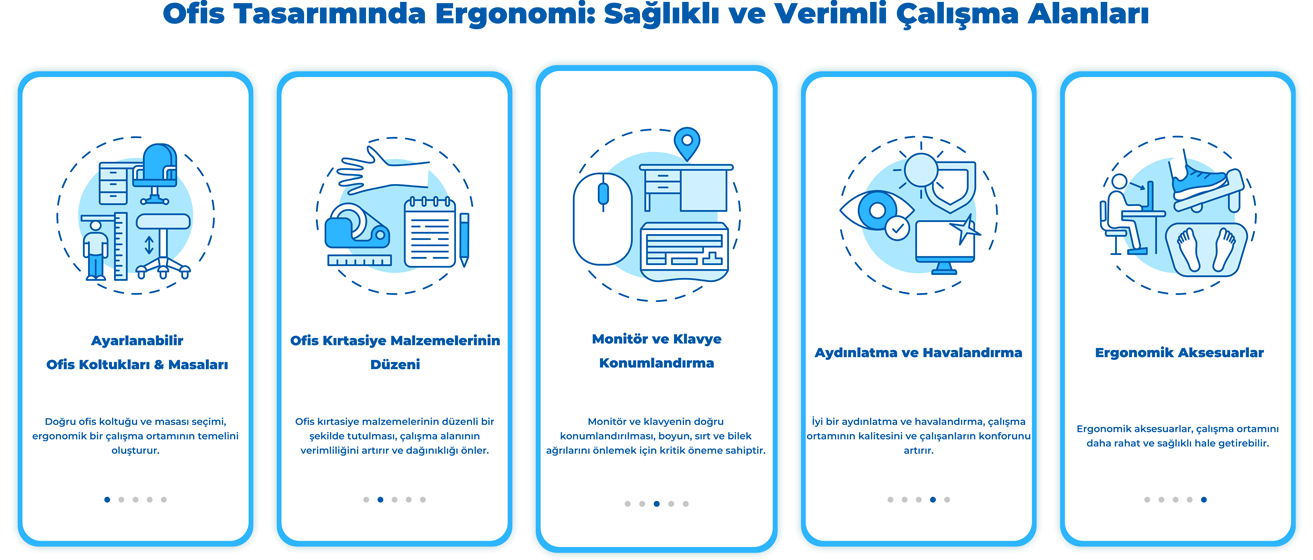Ergonomics in Office Design: Healthy and Productive Workspaces

Ergonomics is a branch of science that aims to optimize the impact of work environments on human health and productivity. Ergonomics in office design aims to increase work performance by protecting the physical and mental health of employees. So, what should be considered to create healthy and productive work spaces? Here are important tips on ergonomic office design:
Ergonomic Office Chairs and Desks
Choosing the right office chair and desk is the basis of an ergonomic work environment. In order for employees to sit comfortably throughout the day, chairs and desks must have ergonomic features.
Ergonomic Office Chairs:
• Adjustable height and back support
• Lumbar pillows that provide waist support
• Armrests are adjustable
Ergonomic Office Desks:
• Height adjustable tables
• Desk designs that enable standing work
• Ergonomic accessories that support keyboard and mouse use
Monitor and Keyboard Positioning
Proper positioning of the monitor and keyboard is critical to preventing neck, back and wrist pain.
Monitor Positioning:
• Placing the monitor at eye level and approximately arm's length
• The top edge of the screen should be at eye level.
• Placed at the appropriate angle to prevent light reflections.
Keyboard and Mouse Positioning:
• The keyboard should be at elbow level and on a flat surface.
• The mouse should be close to the keyboard and easily accessible.
• Use of wrist support
Lighting and Ventilation
Good lighting and ventilation increase the quality of the work environment and the comfort of employees.
Lighting:
• Maximum use of natural light
• Anti-glare, adjustable table lamps
• Providing adequate general lighting
Ventilation:
• Ensuring clean air flow
• Regulation of humidity in the air
• Use of a good ventilation system
Office Stationery Arrangement
Keeping office stationery organized increases the efficiency of the work area and prevents clutter.
Desk Organizers: Use desk organizers for supplies like pens, paper, staplers, etc.
Drawer Organizers: Use drawer organizers to keep small items organized in drawers.
Label: Label files, folders, and other stationery to make them easy to find.
Vertical Storage: Use vertical storage solutions to save space.
Ergonomic Accessories
Ergonomic accessories can make the working environment more comfortable and healthy.
Wrist Rests: Cushions that support the wrists while using the keyboard and mouse.
Foot Rests: Rests where the feet can rest comfortably and support blood circulation.
Monitor Stands: Stands that help adjust the height of the monitor.

Conclusion
An ergonomic office design increases work efficiency while protecting the health of employees. Correct furniture selection, monitor and keyboard positioning, lighting and ventilation arrangements, and the use of ergonomic accessories are the basic elements of creating healthy and productive work spaces.
By following these tips in your office, you can create a more comfortable and productive working environment.
Stay tuned to our blog for new ergonomics tips and office design suggestions!
